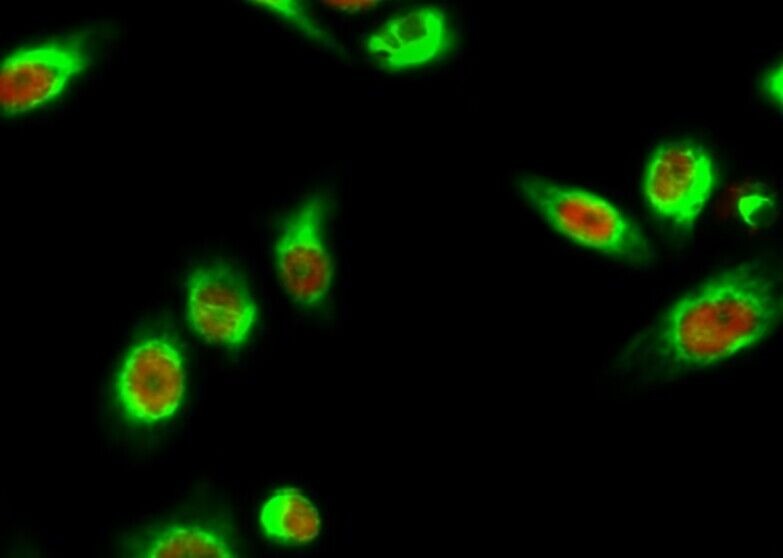Shopping Cart
Remove All Your shopping cart is currently empty
Your shopping cart is currently empty
Anti-MAP2 Antibody (1Q259) is a Mouse antibody targeting MAP2. Anti-MAP2 Antibody (1Q259) can be used in IF,IHC.
| Pack Size | Price | USA Warehouse | Global Warehouse | Quantity |
|---|---|---|---|---|
| 50 μL | $216 | 7-10 days | 7-10 days | |
| 100 μL | $317 | 7-10 days | 7-10 days |
| Description | Anti-MAP2 Antibody (1Q259) is a Mouse antibody targeting MAP2. Anti-MAP2 Antibody (1Q259) can be used in IF,IHC. |
| Synonyms | p67eIF2, p67, MNPEP, MAP2 |
| Clone | 1Q259 |
| Reactivity | Human,Mouse,Rat |
| Verified Activity | 1. IHC staining of paraffin-embedded Human brain tissue with MAP2 mouse mAb diluted at 1:200. 2. Immunofluorescence analysis of Hela cell.   |
| Application | |
| Recommended Dose | IHC: 1:200; IF: 1:50-200 |
| Antibody Type | Monoclonal |
| Host Species | Mouse |
| Construction | Hybridoma Monoclonal Antibody |
| Purification | Affinity purification using immunogen. |
| Appearance | Liquid |
| Formulation | Mouse IgG1 in phosphate buffered saline (without Mg2+ and Ca2+), pH 7.4, 150mM NaCl, 0.02% sodium azide and 50% glycerol. |
| Research Background | MAP2 is the major microtubule associated protein of brain tissue. There are three forms of MAP2; two are similarily sized with apparent molecular weights of 280 kDa (MAP2a and MAP2b) and the third with a lower molecular weight of 70 kDa (MAP2c). In the newborn rat brain, MAP2b and MAP2c are present, while MAP2a is absent. Between postnatal days 10 and 20, MAP2a appears. At the same time, the level of MAP2c drops by 10-fold. This change happens during the period when dendrite growth is completed and when neurons have reached their mature morphology. MAP2 is degraded by a Cathepsin D-like protease in the brain of aged rats. There is some indication that MAP2 is expressed at higher levels in some types of neurons than in other types. MAP2 is known to promote microtubule assembly and to form side-arms on microtubules. It also interacts with neurofilaments, actin, and other elements of the cytoskeleton. |
| Conjucates | Unconjugated |
| Uniprot ID |
| Stability & Storage | Store at -20°C or -80°C for 12 months. Avoid repeated freeze-thaw cycles. |
| Transport | Shipping with blue ice. |
| Size | Quantity | Unit Price | Amount | Operation |
|---|

Copyright © 2015-2025 TargetMol Chemicals Inc. All Rights Reserved.